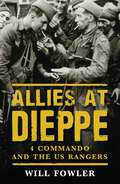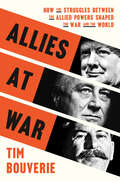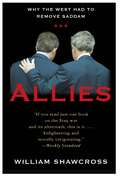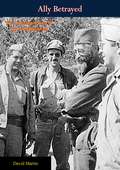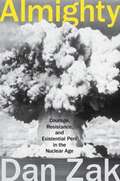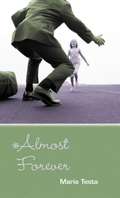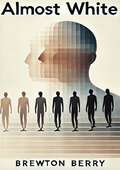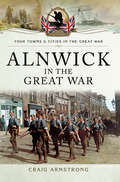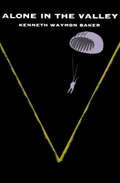- Table View
- List View
Allies at Dieppe: 4 Commando and the US Rangers
by Will Fowlern August 1942, the Allies launched a raid against the German-held port of Dieppe on the French channel coast. It was largely a disaster, with the Canadian forces bearing the brunt of the catastrophe. However, it wasn't all a failure, and history has tended to overlook the role of 4 Commando, who, along with their US Ranger counter-parts, landed and successfully disabled the German guns threatening the rest of the landings. Their actions proved an excellent demonstration of the military adage “train hard, fight easy” and showed the advantage of proper operational planning and brilliant leadership. This controversial raid also included members of the Free French and it was the first time US land forces engaged the Germans on mainland Europe. Set in the context of the Dieppe raid as a whole, Will Fowler studies the contribution of No. 4 Commando and Operation Cauldron, and evaluates how and why they achieved their objectives in this daring Commando raid of World War II.
Allies at War: How the Struggles Between the Allied Powers Shaped the War and the World
by Tim BouverieA &“revelatory&” (The Guardian) political history of World War II that opens a window onto the difficulties of holding together the coalition that ultimately defeated Hitler—by the critically acclaimed author of Appeasement&“A fine reassessment of Allied politics and diplomacy during the Second World War: impeccably researched, elegantly written and compellingly argued.&”—The Times (UK) After the fall of France in June 1940, all that stood between Adolf Hitler and total victory was a narrow stretch of water and the defiance of the British people. Desperate for allies, Winston Churchill did everything he could to bring the United States into the conflict, drive the Soviet Union and Nazi Germany apart, and persuade neutral countries to resist German domination.By early 1942, after the German invasion of Russia and the Japanese attack on Pearl Harbor, the British-Soviet-American alliance was in place. Yet it was an improbable and incongruous coalition, divided by ideology and politics and riven with mistrust and deceit. Churchill, Franklin D. Roosevelt, and Joseph Stalin were partners in the fight to defeat Hitler, but they were also rivals who disagreed on strategy, imperialism, and the future of liberated Europe. Only by looking at their areas of conflict, as well as cooperation, are we able to understand the course of the war and world that developed in its aftermath.Allies at War is a fast-paced, narrative history, based on material drawn from more than a hundred archives. Using vivid, firsthand accounts and unpublished diaries, Bouverie invites readers into the rooms where the critical decisions were made and goes beyond the confines of the Grand Alliance to examine, among other topics, the doomed Anglo-French partnership and fractious relations with General Charles de Gaulle and the Free French, and interactions with Poland, Greece, Francoist Spain and neutral Ireland, Yugoslavia, and Nationalist China.Ambitious and compelling, revealing the political drama behind the military events, Allies at War offers a fresh perspective on the Second World War and the origins of the Cold War.
Allies: Why the West had to Remove Saddam
by William ShawcrossThe Cold War certainties that had seemed so fixed in the 20th Century were overturned by the war in Iraq. Saddam Hussein's Republican Guards were the battlefield victims of a brutally quick war of shock and awe. No less shocked and awed were some of America's former allies: "old" Europe, large blocks of the UN, and half the G8 nations suddenly found themselves outside the chain of command and influence. Bush, Blair, and their allies were driven by a new global vision. Their mission, expressed with great moral certainty, has been called imperialist. In fact, it was simply inevitable after 9/11: that terrible event ushered in a new era with new rules. Shawcross shows what the future will hold for Iraq, Israel, and the Middle East, how Western alliances will be changed forever, and demonstrates that the war was the definitive proof that a new era of 21st Century international politics has begun.
Allison-Engined P-51 Mustang
by Martyn Chorlton Adam ToobyNot enough credit is given to Allison-engined variants of one of the world's most famous fighters. We now associate the name "Mustang" with the pretty bubble-canopied fighters which now grace our skies as war birds at Airshows around the world today. There is no doubt that the Merlin engine elevated the Mustang's performance from just being "very good" to "exceptional" and this, in many people's eyes, peaked with the P-51B and P-51C, not the more familiar and most produced version - the P-51D - which comprises the majority seen today. From its inception in early 1940, the development of the fighter, which culminated in the prototype NA-73X launched in October, can only be described as rapid. Before the aircraft had even left the drawing board, the RAF had already placed an order for 320 units, such was the confidence in the design and need for a fighter at the time; from preliminary design to maiden flight had taken just 127 days!By early January 1942, the Mustang was in service with the RAF, flying low-level armed reconnaissance operations over Northern France. This was to be the Mustang's hunting ground all the way up to D-Day and beyond. It had proved to be a highly capable aircraft in this role. While supporting Operation Jubilee over Dieppe, Mustangs were used in a more aggressive capacity for the first time and its first enemy kill was claimed - ironically, the pilot was an American volunteer! The RAF's Allison-engined Mustangs continued to prove their worth from late 1943, flying endless reconnaissance sorties in preparation for the Normandy invasion, and continuing to fly as the Allies slowly pushed eastwards towards Berlin. This was a remarkable service length and, despite later Merlin variants arriving in-theatre, the Mustang I, Ia and II served on the front lines until late 1944. In American hands the Mustang entered service as a dive-bomber designated as the A-36 Apache/Invader. From late 1942 onwards, this type served with distinction in North Africa, both in the ground-attack role and in air-to-air combat, and would do so in the Far East as well. The complete fighter variant was the P-51A which, along with the A-36, served in North Africa and the Far East, excelling in Burma as part of LtCol P. Cochrane's 1st Air Command Group supporting the Chindits. Like their RAF colleagues, the Americans flew the type in the low-level photographic role, designated as the F-6A and F-6B when it continued to serve with the 9th Air Force until the war's end and beyond.
Ally Betrayed: The Uncensored Story of Tito and Mihailovich
by David Martin Dame Rebecca WestDavid Martin, a distinguished journalist, political analyst and staff member on the Senate Judiciary Committee, first published his book ALLY BETRAYED in 1946. Having devoted his life to uncovering the truth and to defending Mihailovich, Martin’s book asks the crucial questions:1. Why did the Allied press which had made a great hero of Mihailovich as a resister of Axis invaders of Yugoslavia begin to play him down after 1942?2. What was Tito’s past? And where was the radio station located that heralded his appearance in Yugoslavia?3. What decision was reached at Teheran with respect to Tito and Mihailovich?4. How was the ALLIED military intelligence about Yugoslavia falsified?5. Why did Churchill say of Yugoslavia, “I was deceived and badly informed.”David Martin was born in Ontario, Canada, in 1914. Before World War II, he wrote on Canadian affairs for Current History, The Nation, The New Republic, the New Leader, and other journals. He joined the Canadian Air Force in October 1942, became a pilot, and flew on the Burmese frontier. He was honorably discharged in 1946.With a Foreword by Dame Rebecca West, one of Mihailovich’s most avid supporters.“Solid reading”—Kirkus Review
All’s Fair: The Story of the British Secret Service
by Cpt. Henry LandauIt was in 1934 that Henry Landau, Captain in the British Army’s RFA, first published his memoirs as a World War I spy master.All’s Fair: The Story of the British Secret Service tells an authentic, exciting, true story of spies and their dangerous work, revealed for the first time by a British Secret Service Agent…“It does not contain a dull page.”—New York Herald Tribune
Almanac of World War I
by David F. Burg L. Edward Purcell&“A detailed day-by-day account of the war&’s events, emphasizing the military dimensions but also touching on politics and diplomacy.&” —Choice Almanac of World War I provides reports of the action on all fronts and of the events surrounding the conflict, from the guns of August 1914 to the November 1918 Armistice and its troubled aftermath. Daily entries, topical descriptions, biographical sketches, maps, and illustrations combine to give a ready and succinct account of what was happening in each of the principal theaters of war. This definitive book on the Great War by David F. Burg and L. Edward Purcell—coauthors of The World Almanac of the American Revolution—&“captures the pathos and absurdity of the conflict in a way that few others have&” (American Reference Books Annual). &“Whereas most accounts of World War I zero in on the muddy trenches of the Western front, Burg and Purcell&’s work puts that theater in the context of the larger war.&” —Tallahassee Democrat &“There is really nothing comparable to this volume.&” —Booklist &“Almanacs represent the final book(s) needed to complete a collection regarding a particular period in history. David Burg and L. Edward Purcell&’s Almanac of World War I is such a book.&” —BookLovers &“A useful reference for the Great War.&” —Paper Wars &“This valuable reference book provides a day-by-day account of the First World War, with each entry divided geographically.&” —Canadian Military History
Almighty: Courage, Resistance, and Existential Peril in the Nuclear Age
by Dan ZakON A TRANQUIL SUMMER NIGHT in July 2012, a trio of peace activists infiltrated the Y-12 National Security Complex in Oak Ridge, Tennessee. Nicknamed the "Fort Knox of Uranium," Y-12 was supposedly one of the most secure sites in the world, a bastion of warhead parts and hundreds of tons of highly enriched uranium--enough to power thousands of nuclear bombs. The three activists--a house painter, a Vietnam War veteran, and an 82-year-old Catholic nun--penetrated the complex's exterior with alarming ease; their strongest tools were two pairs of bolt cutters and three hammers. Once inside, these pacifists hung protest banners, spray-painted biblical messages, and streaked the walls with human blood. Then they waited to be arrested. WITH THE BREAK-IN and their symbolic actions, the activists hoped to draw attention to a costly military-industrial complex that stockpiles deadly nukes. But they also triggered a political and legal firestorm of urgent and troubling questions. What if they had been terrorists? Why do the United States and Russia continue to possess enough nuclear weaponry to destroy the world several times over? IN ALMIGHTY, WASHINGTON POST REPORTER Dan Zak answers these questions by reexamining America's love-hate relationship to the bomb, from the race to achieve atomic power before the Nazis did to the solemn 70th anniversary of Hiroshima. At a time of concern about proliferation in such nations as Iran and North Korea, the U.S. arsenal is plagued by its own security problems. This life-or-death quandary is unraveled in Zak's eye-opening account, with a cast that includes the biophysicist who first educated the public on atomic energy, the prophet who predicted the creation of Oak Ridge, the generations of activists propelled into resistance by their faith, and the Washington bureaucrats and diplomats who are trying to keep the world safe. Part historical adventure, part courtroom drama, part moral thriller, Almighty reshapes the accepted narratives surrounding nuclear weapons and shows that our greatest modern-day threat remains a power we discovered long ago.
Almost Forever
by Maria TestaA spare, lyrical - and ultimately heartening - novel about one family's experience during the Vietnam War that has much to say to a new generation of readers. Doctors don't fight; doctors heal. But when the young narrator of Maria Testa's lyric novel watches her father march off to serve a year in the U.S. Army Medical Corps, a year seems like a very long time. A year is a long time when you're waiting for letters, waiting for word. A year seems endless when you don't know where your father is anymore. A year is almost forever when you're wondering . . . and forgetting. Through the eyes of an observant child, Maria Testa, author of the critically acclaimed Becoming Joe Dimaggio,has written a taut and tender American ballad of one family's experience in the year 1968 - a year that would be a turning point in both U.S. involvement in South Vietnam and American public opinion.
Almost White
by Brewton BerryAlmost White by Brewton Berry is a compelling exploration of the complex identities and lived experiences of racial and ethnic groups that occupy the ambiguous space between traditional categories of "black" and "white" in the United States. Through meticulous research and vivid storytelling, Berry examines communities such as the Melungeons, the Cajuns, and other historically marginalized groups that defy easy classification, shedding light on their struggles, adaptations, and contributions to American society.Berry delves into the historical, social, and cultural forces that have shaped these groups, addressing the tensions of assimilation, discrimination, and self-identification. He vividly portrays their attempts to navigate a society often defined by rigid racial hierarchies, uncovering the resilience and ingenuity of these communities in the face of exclusion and prejudice.With empathy and academic rigor, Almost White challenges readers to rethink the simplistic binaries of race and ethnicity, offering a nuanced perspective on the fluidity and complexity of identity. By weaving historical analysis with personal stories and field observations, Berry not only provides a deeper understanding of these groups but also prompts broader reflection on the intersections of race, culture, and belonging.This groundbreaking work is essential reading for anyone interested in sociology, anthropology, or American history, as well as those seeking to understand the untold stories of communities often left out of mainstream narratives.
Almost a Bride: A Clean Romance (Turtleback Beach #1)
by Rula SinaraCan he love her…And keep her safe?No one in Turtleback Beach knows that veterinarian Grayson Zale is in the witness protection program—not even the woman who left him at the altar. When a joint inheritance brings Mandi Rivers back to their small seaside town, Gray can’t deny that their connection is as strong as ever. But his mysterious past remains between them; can he reveal the truth without endangering Mandi—and their future?
Alnwick in the Great War
by Craig ArmstrongAs a market town and one of the seats of government of the county authority, Alnwick played a key role in the coordination of Northumberlands war effort. With a wide rural hinterland, the town was considerably important in the production and dispersal of food, which was vital to the war effort. As the home of the Duke of Northumberland, the town had a hugely influential role in the overall Northumbrian war effort from civilian affairs to military recruitment.The town shared a proud tradition of military service with the wider region, and this was reflected in the huge numbers of Alnwick men and women who came forward for service in the military or in roles such as nursing. The town was a regional recruitment centre and hosted its own unit of the 1/7th (Territorial) Battalion, Northumberland Fusiliers, as well as other military units. From 1915, Alnwick was also one of the largest infantry training bases in the north of England. Many of the locally raised Pals Battalions, which were raised in the north, received their training here. For those left behind in Alnwick, the war was a time of worry and hardship, however others saw the business opportunities. This book includes accounts of the struggle that local families faced in coping with rising wartime prices, longer working hours and endless worry, sometimes in the face of accusations of drunkenness or idleness from the authorities and unfair criticism of the rural districts recruiting record.Despite these hardships, the people of Alnwick provided incredible charitable support right up until the end of the war, in addition to their normal efforts. Several military hospitals were set up in the town and surrounding area, with the training base later becoming a recuperation base for injured soldiers. These momentous efforts are explained throughout this compelling book, which is a testimony to the bravery, self-sacrifice and determination of the people of Alnwick during the Great War.
Alone I Fly: A Wellington Pilot's Desert War
by Bill BaileyThe riveting firsthand account of an RAF pilot&’s adventures in World War II—from life-and-death situations to unusual posts that test his usual good humor. After several years at sea, Sgt Bill Bailey arrived in Cairo in 1942 as a new recruit to the RAF, hoping to fulfill his ambition to fly bombers. Within hours of his arrival he is sent on his first bombing mission as second pilot in a 104 Squadron Wellington. Hit by enemy gunfire, his aircraft suffered continual loss of altitude until hitting a rock outcrop and disintegrating. Bailey came to lying alone on a precipitous ledge and soon realized that he was the sole survivor. To stay alive in temperatures of over 100 degrees, he trudged over seemingly endless dunes at dusk and dawn, his energy gradually fading. Though he ultimately found shelter in an abandoned German reconnaissance truck, he gradually resigned himself to death. But with a last desperate inspiration Bailey realized that it might be possible to attract attention by heliograph. He found enough equipment in the truck and rigged a mast with the mirror at the top and commenced signaling, eventually being rescued by a Long Range Desert Patrol. After recuperation, Bailey rejoined his squadron and was given a new crew with whom he completed his tour. He was then sent to Malta where much to his amazement he was made ground controller of a satellite fighter airfield. This is Bailey&’s uniquely harrowing and humorous account of situations beyond his control—both in and out of the cockpit—during the Second World War.
Alone I Fly: A Wellington Pilot's Desert War
by Bill BaileyThe riveting firsthand account of an RAF pilot&’s adventures in World War II—from life-and-death situations to unusual posts that test his usual good humor. After several years at sea, Sgt Bill Bailey arrived in Cairo in 1942 as a new recruit to the RAF, hoping to fulfill his ambition to fly bombers. Within hours of his arrival he is sent on his first bombing mission as second pilot in a 104 Squadron Wellington. Hit by enemy gunfire, his aircraft suffered continual loss of altitude until hitting a rock outcrop and disintegrating. Bailey came to lying alone on a precipitous ledge and soon realized that he was the sole survivor. To stay alive in temperatures of over 100 degrees, he trudged over seemingly endless dunes at dusk and dawn, his energy gradually fading. Though he ultimately found shelter in an abandoned German reconnaissance truck, he gradually resigned himself to death. But with a last desperate inspiration Bailey realized that it might be possible to attract attention by heliograph. He found enough equipment in the truck and rigged a mast with the mirror at the top and commenced signaling, eventually being rescued by a Long Range Desert Patrol. After recuperation, Bailey rejoined his squadron and was given a new crew with whom he completed his tour. He was then sent to Malta where much to his amazement he was made ground controller of a satellite fighter airfield. This is Bailey&’s uniquely harrowing and humorous account of situations beyond his control—both in and out of the cockpit—during the Second World War.
Alone against Hitler: Kurt von Schuschnigg's Fight to Save Austria from the Nazis
by Jack BrayAlone Against Hitler tells the lesser-known but pivotal story of former Austrian chancellor Kurt von Schuschnigg. As one of the first leaders to defy Adolf Hitler during the buildup to WWII, his story is of lasting importance. Though young and untested upon entering office, von Schuschnigg courageously rejected the rising tide of Austrian Nazism, insisting on equal rights and respect for the Jewish minority. Jack Bray surveys the geopolitical conditions in Austria during the march to war, highlighting von Schuschnigg&’s valiant four-year struggle to prevent his nearly defenseless small nation from being taken over from within by unrelenting, violent Austrian Nazis.Von Schuschnigg&’s encounters with Hitler and other central characters of 1930s Germany (Himmler, Hess, Ribbentrop, Hindenburg, Goring, and Papen, as well as their ally, Mussolini) are recounted in scenes of high drama and vivid detail. For his daring defiance, and his refusal of offers to flee the Nazi invasion, von Schuschnigg paid a dear price—seven years in Nazi captivity and abuse to the point of breakdown. In one of Hitler&’s final acts from the bunker where he would ultimately take his own life, the trembling fuhrer ordered von Schuschnigg to be killed. Just as von Schuschnigg was set to be executed, with the war at its eleventh hour, he received a near-miraculous deliverance. Although Kurt von Schuschnigg&’s name may be unfamiliar now, he was for a brief moment at the center of world history, even gracing the cover of Time magazine in 1938. Alone Against Hitler profiles an oft-forgotten but crucially important figure in WWII history, celebrating the legacy of a man who bravely fought against evil.
Alone at Dawn: Medal of Honor Recipient John Chapman and the Untold Story of the World's Deadliest Special Operations Force
by Dan Schilling Lori LongfritzThe astonishing true account of John Chapman, Medal of Honor recipient and Special Ops Combat Controller, and his heroic one-man stand during the Afghan War, as he sacrificed his life to save the lives of 23 comrades-in-arms.In the predawn hours of March 4, 2002, just below the 10,469-foot peak of a mountain in eastern Afghanistan, a fierce battle raged. Outnumbered by Al Qaeda fighters, Air Force Combat Controller John Chapman and a handful of Navy SEALs struggled to take the summit in a desperate bid to find a lost teammate. Chapman, leading the charge, was gravely wounded in the initial assault. Believing he was dead, his SEAL leader ordered a retreat. Chapman regained consciousness alone, with the enemy closing in on three sides.John Chapman's subsequent display of incredible valor--first saving the lives of his SEAL teammates and then, knowing he was mortally wounded, single-handedly engaging two dozen hardened fighters to save the lives of an incoming rescue squad--posthumously earned him the Medal of Honor. Chapman is the first airman in nearly fifty years to be given the distinction reserved for America's greatest heroes.Alone at Dawn is also a behind-the-scenes look at the Air Force Combat Controllers: the world's deadliest and most versatile special operations force, whose members must not only exceed the qualifications of Navy SEAL and Army Delta Force teams but also act with sharp decisiveness and deft precision--even in the face of life-threatening danger.Drawing from firsthand accounts, classified documents, dramatic video footage, and extensive interviews with leaders and survivors of the operation, Alone at Dawn is the story of an extraordinary man's brave last stand and the brotherhood that forged him.
Alone in Berlin (Forsyte chronicles)
by Michael Hofmann Hans FalladaOtto, an ordinary German living in a shabby apartment block, tries to stay out of trouble under Nazi rule. But when he discovers his only son has been killed fighting at the front he's shocked into an extraordinary act of resistance, and starts to drop anonymous postcards attacking Hitler across the city. If caught, he will be executed. Soon this silent campaign comes to the attention of ambitious Gestapo inspector Escherich, and a murderous game of cat-and-mouse begins. Who loses, pays with their life.
Alone in the Ashes (Ashes #5)
by William W. JohnstoneA lone mercenary must fend for himself against gangs of bloodthirsty thugs in a post-apocalyptic wasteland—from a USA Today–bestselling author. While those who survived the bombs, the fallout, and the germ warfare struggle to stay alive in a world gone mad, legendary soldier and survival expert Ben Raines is fighting to rebuild a nation out of anarchy and bitter chaos. In this hellish new order, there are devils leading armed gangs of marauders. Under monikers like Cowboy Vic and Texas Red, they wreak destruction wherever they go. When Raines is cut off from his SUSA Rebel forces, he becomes their prey—a special target for their frenzy and bloodlust. From Georgia to West Texas and Colorado to Idaho, Raines must stay one step ahead of death…until he decides it's time to turn and fight. Fifth in the long-running series!
Alone in the Dark (Cavanaugh Justice #8)
by Marie FerrarellaHeck, the reclusive officer hardly spoke to anyone otherthan his faithful K-9 companion. So what harm could comefrom Patience Cavanaugh letting the haunted rebel protecther from a dangerous stalker? She might be a veterinarian,but Patience had enough cop sense from the rest of herfamily to know that her life was on the line and Brady Coltranejust might be the one to save it. So despite the fact thatone look at her brooding bodyguard in blue made her hearttrip, wasn't she safer in Brady's embrace than standing thereall alone?
Alone in the Valley
by Kenneth Waymon Baker&“This first novel by a disabled Vietnam veteran compassionately examines a year in the life of a combat infantryman during that conflict&” (Publishers Weekly). Alone in the Valley tells the story of nineteen-year-old Daniel Perdue and his year as a grunt, pursuing an elusive enemy through the steamy jungles of the Central Vietnamese Highlands. From the moment the boy solider touches down until he is airborne on his way home again, author Kenneth Waymon Baker makes sure the reader hears every sound, sees every sight, feels every emotion as his young hero faces the rigors of war. Daniel is changed forever, a man who will return with the instincts of a warrior. If you only read one book about Vietnam, make it Alone in the Valley. It will leave you touched and changed. &“A well-written and unassuming debut novel whose very artlessness is its principle virtue. Though his voice is unique, Baker tells it exactly as it was.&” —Kirkus Reviews
Alone on Guadalcanal
by Martin W. ClemensThis remarkable memoir tells the compelling story of the near-mythic British district officer who helped shape the first great Allied counteroffensive. Scottish-born and Cambridge-educated, Martin Clemens managed to survive months behind Japanese lines in one of the most unfriendly climates and terrains in the world. After countless partisan and spy missions, in 1942 he emerged from the jungle and integrated his Melanesian commando force into the heart of the 1st Marine Division's operations, earning the unfettered admiration of such legendary Marine officers as Vandegrift, Thomas, Twining, Edson, and Pate. The book is based on a journal Clemens kept during the war and might well be the last critical source of analysis of the Solomon's campaign. His eyewitness accounts of harrowing long-distance patrols and life on the run from shadowy Japanese intelligence operatives and treacherous islanders are unmatched in the literature of the Pacific War. First published in 1998, the story is essential and enjoyable reading.
Alone: Britain, Churchill, And Dunkirk: Defeat Into Victory
by Michael KordaCombining epic history with rich family stories, Michael Korda chronicles the outbreak of World War Two and the great events that led to Dunkirk. An epic of remarkable originality, Alone captures the heroism of World War II as movingly as any book in recent memory. Bringing to vivid life the world leaders, generals, and ordinary citizens who fought on both sides of the war, Michael Korda, the best-selling author of Clouds of Glory, chronicles the outbreak of hostilities, recalling as a prescient young boy the enveloping tension that defined pre-Blitz London, and then as a military historian the great events that would alter the course of the twentieth century. For indeed, May 1940 was a month like no other. The superior German war machine blazed into France, as the Maginot Line, supposedly "as firmly fixed in place as the Pyramids," crumbled in days. With the fall of Holland and Belgium, the imminent fall of Paris, the British Army stranded at Dunkirk, and Neville Chamberlain’s government in political freefall, Winston Churchill became prime minister on this historical nadir of May 10, 1941. Britain, diplomatically isolated, was suddenly the only nation with the courage and the resolve to defy Hitler. Against this vast historical canvas, Korda relates what happened and why. We first meet him at the age of six, surrounded by his glamorous movie family: his stage actress mother; his elegant father, Vincent, soon to receive an Academy Award; and his devoted Nanny Low, with whom he cites his evening prayers. Even the cheery BBC bulletins that Michael listened to every night could not mask the impending catastrophe, the German invasion so certain that the young boy, carrying his passport on a string around his neck, was evacuated to Canada on an ocean liner full of children. Such alarm was hardly exaggerated. No one, after all, could have ever imagined that the most unlikely flotilla of destroyers—Dutch barges, fishing boats, yachts, and even rowboats— would rescue over 300,000 men off the beach at Dunkirk and home to England. The miraculous return of the army was greeted with a renewed call for courage, and in the months that followed, the lives of tens of millions would be inexorably transformed, often tragically so, by these epochal weeks of May 1940. It is this pivotal turning point in world history that Korda captures with such immediacy in Alone, a work that triumphantly demonstrates that even the most calamitous defeats can become the most legendary victories.
Along Alaska Trails: An Old Sourdough
by Lois McGarveyAlong Alaska Trails, first published in 1960, is the autobiographical account of Lois McGarvey (“An Old Sourdough”), who first traveled to Alaska in 1911. McGarvey, a young widow and mother at the time, would spend the rest of her life there, meeting success and failure along the way, but always maintaining a positive attitude, despite the many hardships she encountered along the way. From the Introduction: McGarvey “succeeded greatly in befriending people and enjoying life. Through her shrewdness and industry, she accumulated money in her later years. She cooked, mined, married, raised a family, sold furs, bought and sold real estate, kept a large boardinghouse for many different sorts of people—but no strangers—and one old blind man who was penniless but well fed and clothed because of her kindness. She came back from death's door five years ago, though she now has to use a wheelchair. Lois McGarvey knows tragedy, yet writes comedy for you.” Illustrated with 13 pages of photographs
Along Came Us
by Nicole MclaughlinHe’s Mr. Wrong, she’s Miss Independent. When the two come together, sparks fly! Don’t miss Along Came Us, a sexy and heartwarming romance from Nicole McLaughlin.National Guardsman Tyler Cavallo knows all too well what it feels like to be a volatile teenager. There was a time when it seemed like everyone—be it his father, a rival gang member, or his opponent in the MMA cage—was out to get him. These days he focuses that fight into his gym where he mentors at-risk youths. But one particular teen has Tyler more concerned than usual, and if he’s learned one thing in life, it’s to trust his instincts, and right now those instincts are telling him that this boy isn’t safe.Lia Hanson is a woman on a mission. With bills to pay, and a younger brother to raise, and two full time jobs, she’s working her ass off and doing the best she can. But in a few months she will finally graduate from college and be able to put most of that behind her for good. Or so she thinks, until a certain overbearing and stupidly good looking gym owner acts like he knows what’s best for her brother. A man is the last thing she wants, and this man is certainly not who she pictured as a stable role model. Lia thought she had a plan, but Tyler’s support, strength and passion have her realizing that sometimes the best things in life come when they’re least expected.
Along The Tracks
by Michael Swirsky Tamar BergmanBased on a true story, Along the Tracks tells the tale of Yankele, a Polish boy who is separated from his mother during the German invasion of Poland in World War II.
